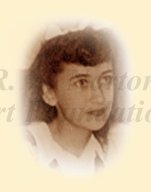
|

|
|
|
|
She was born in Shreveport as Aspasia Theo to John Constantine and Sophia Theo, immigrants from Turkey of Greek ancestry. Her father arrived in America at Ellis Island on Christmas Day, 1912, at age nineteen. "He said he was just so thankful to God that he was coming to a country where he could be free and not be persecuted," she recalls her father saying. Several family members immigrated, too, including her paternal and maternal grandmothers and her parents' cousins. "Cassie" remembers horse-drawn wagons and carts from which vendors sold vegetables, tamales, and other foods. Her father opened a candy store in partnership with another Greek immigrant, and later ran Theo's Coffee Shop on Milam Street. She recalls nineteen Greek-owned restaurants in downtown Shreveport in the 1940s. Before Saint George Greek Orthodox Church was built in 1934, her family attended Saint Paul's Episcopal Church. "There's a lot of similarities between the beliefs and liturgies of the Episcopal church and Orthodox church," she states. To raise money to build Saint George, congregation members stood on street corners downtown and asked for donations. "They were such proud people," she says. "They didn't like to ask outsiders for money you know. And to this day, it's the same thing." Cassie attended Catholic schools, but from 4 to 6 p.m. went to classes at her church where she learned to read and write Greek. She graduated from CE Byrd High School in 1946, and earned a music degree from Centenary College in 1951. Cassie met Nick Mandrapalias, then a soldier in the U.S. Army, at a Mardi Gras party in Monroe, Louisiana. They married on November 27, 1952. The couple had three children. Cassie and Nick have traveled several times to Greece where, she says, "it just seems like home. But yet, this is my home here. How do you explain that?" Throughout her life, the Greek community remained very close, she says. They often gathered on what she calls "name days," such as Saint George Day on the first Sunday after Easter. |


